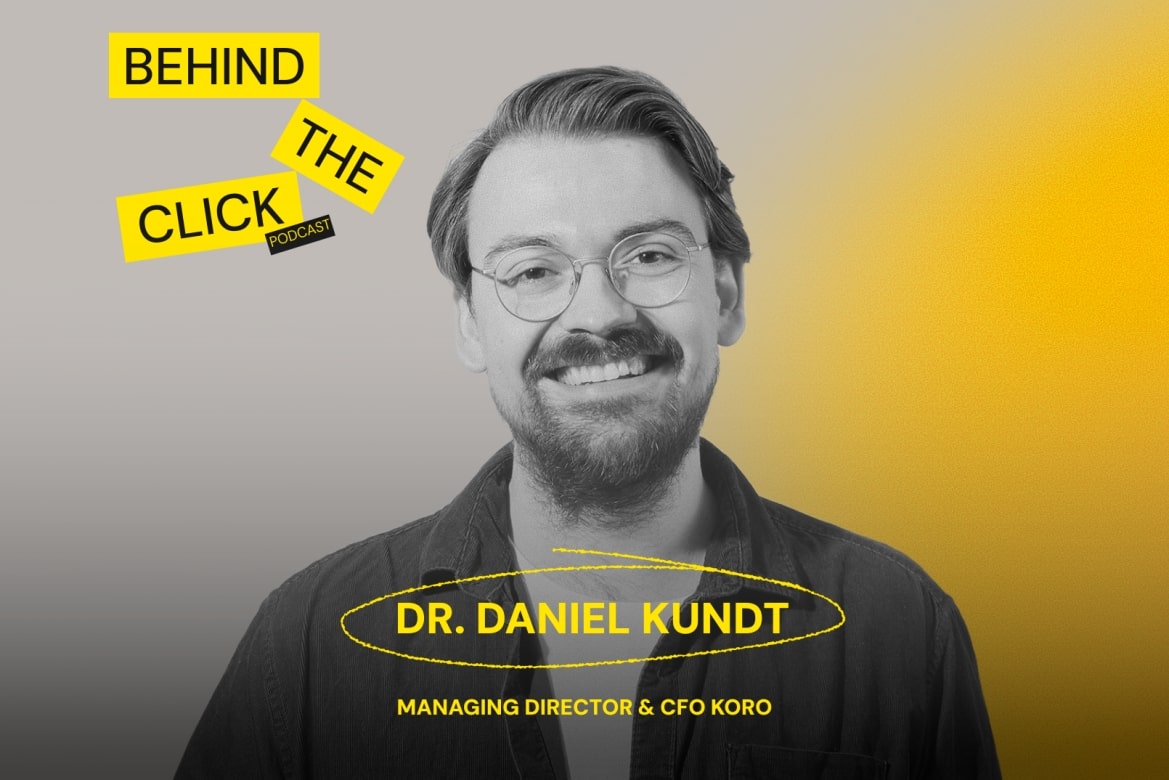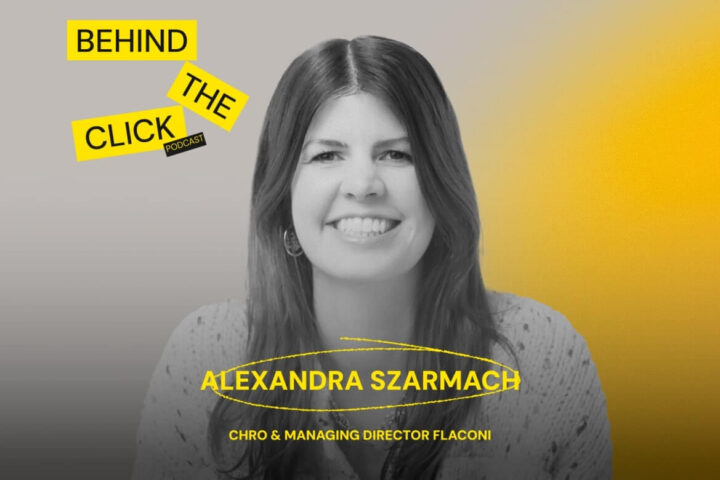Behind the Click Podcast with Daniel Kundt: building an omnichannel love brand
Written by
Editorial TeamPublished on
KoRo’s journey on Behind the Click: Dr. Daniel Kundt explains product testing, price transparency, retail growing pains, and fact-driven fundraising.

When KoRo launched in 2014, it wasn’t selling snacks at all. The founders began with detergents and quickly discovered how hard it would be to stand out. They shifted to nuts and dried fruit and, over time, to products built on those ingredients, setting the stage for a very different kind of food company. In Behind the Click hosted by Janine Vanessa Heinrich, Dr. Daniel Kundt, Managing Director & CFO, walks through what powered that rise.
KoRo’s logic started with online realities. Big, heavy items are annoying to carry home and require unglamorous packaging on a physical shelf, but a web shop neutralizes both issues. Delivery handles the weight, photography handles the looks, and higher basket values help the economics. That online-first view gave the company permission to start with simple staples, then keep layering on differentiation: first by spotting the nut-butter trend taking off in the U.S., then by folding those butters into bars, energy balls, and other snacks that feel familiar yet better made. Over time a pattern emerged – larger formats sell well online, while standard snack sizes make more sense at retail – so the assortment naturally split by channel.
Making good better
What KoRo didn’t do was throw half-baked ideas at customers to see what sticks. As Daniel Kundt puts it, tests are there to validate demand and tune the last 10 percent, not to push through “just okay” products. A typical launch might appear with a strong incentive – add the new item to your basket and shipping for the whole order is free – so trial spikes without giving the product away. If feedback points to changes (“more pistachio,” “less dry”), the team reformulates and relaunches.
A brand built by behavior, not brand books
Brand building followed a similar, almost stubborn simplicity. KoRo “never wanted to be a brand,” Daniel Kundt says. The team focused on how they themselves wanted to be treated: with quality, fairness, and transparency. That showed up in small, consistent choices, like letting creators talk about whatever KoRo product genuinely fits their community, even when it isn’t the hero SKU, and in bigger ones, such as treating influencer spend as a performance channel to be measured, not as a vague brand budget. It also showed up in pricing. Online, KoRo explains why prices move, poor harvests, improved sourcing, and so on, and shares price histories. Instead of hiding volatility, the company narrates it, and that honesty becomes part of the value.
Pre-pandemic capital and a bet on stores
Timing mattered, twice. A fundraising round closed in December 2019, just before lockdowns pushed e-commerce into overdrive. KoRo had the inventory and ad budget to serve the spike. Then, while many startups doubled down on direct-to-consumer, KoRo leaned into physical retail on the belief that food would remain mostly an offline category. That move gave them a path to scale beyond the website.
Omnichannel growing pains
Switching from pure D2C to retail exposed new realities: commercial and operational. Direct-to-consumer can quietly badge a product “out of stock.” A supermarket cannot; an empty slot is lost sales and a broken promise to a buyer. Early on, KoRo failed to deliver to a major retail partner and lost the listing. The recovery was straightforward but not easy: prove reliability with other partners, fix the process, and earn back trust. Back-office details turned out to be just as critical as pallets and promotions. Invoices had to be exactly right and routed to the right place, or the money wouldn’t arrive. Planning needed more buffer. The company added experience on the retail side too, recognizing that a young sales team sitting across from buyers with decades in the job is an uneven match.
Fact-driven fundraising
If product and execution tell one part of the story, fundraising tells another. A significant round negotiated in late 2021 closed in March 2022. After that, the market flipped. Customer acquisition costs jumped compared with 2021, some investors openly preferred to wait for lower valuations, and direct-to-consumer lost its halo. KoRo bridged with the support of existing investors – an essential signal that helped bring in new capital – and kept the plan intact. Daniel Kundt describes the leadership style as fact-driven rather than hype-driven; it doesn’t create “love at first pitch,” but it travels well in diligence. The team has complemented that pragmatism with stronger storytelling support without drifting from the numbers.
What’s next
Looking ahead, the priorities are clear. Product innovation remains the first line of growth. International expansion is next, with dedicated teams localizing the brand’s voice and assortment in France, Italy, and the Netherlands rather than copy-pasting the German playbook. And on the operations side, moving closer to the source promises both more transparency and better efficiency.
None of this reads like a magic trick. KoRo’s edge is a set of consistent choices: respect the physics of each channel, test only products you’re proud of, let creators be creators, explain what you’re doing and why, and build the unglamorous systems that keep shelves full. The brand followed the behavior. The scale followed the systems. And the story, in the end, wrote itself.
To hear interview with Daniel in full, in his own voice and with all the nuance that can’t fit on a page, watch the complete episode of Behind the Click:
You can also listen to the episode on the Spotify or Apple Podcasts.
***


